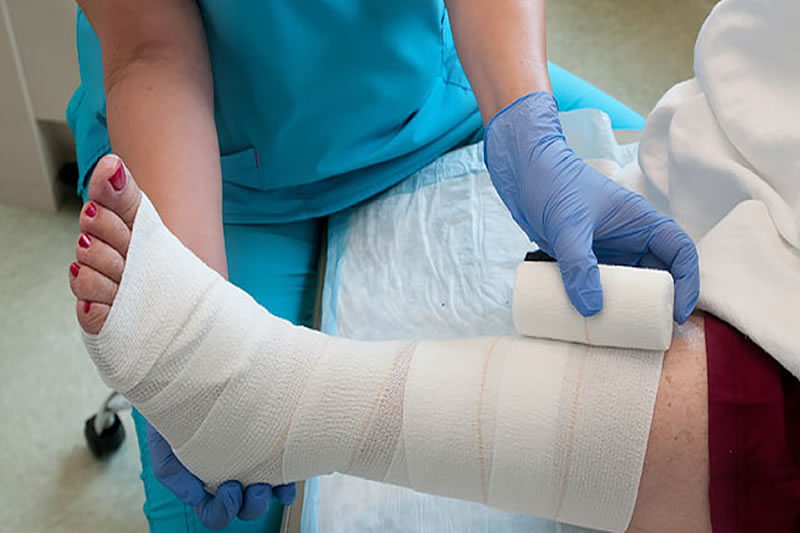Surgical recovery involves multiple stages, including wound management. A wound care specialist provides guidance, observation, and tailored interventions throughout recovery. They can identify early signs of infection and adjust dressings or treatments as needed, contributing to smoother healing after surgery. Here are several ways a wound care professional helps with post-surgical recovery:
Assessing Surgical Wounds
The initial evaluation of the surgical site by a wound care specialist is a key step; it establishes a baseline for healing and helps detect potential complications early. During this phase, the specialist examines the characteristics of the wound, such as depth, width, and position. This information helps determine the type of dressing that should be used.
Analysis of the surrounding tissue and skin involves looking for redness, heat, swelling, and the type and quantity of drainage. These details offer further insight into the recovery status, and they are helpful for structuring a wound management strategy. After gathering this information, the specialist can create a targeted approach for the patient’s unique healing needs.
Developing Structured Wound Care Plans
Once the assessment concludes, the wound specialist develops a structured care plan that includes selecting the most appropriate dressings. Each wound type requires specific materials to maintain moisture balance, protect against potential contaminants, and control fluid. Options may include:
- Foam dressings- Ideal for absorbing excess drainage and cushioning the wound.
- Hydrocolloid dressings- Useful for maintaining a moist healing environment and protecting against friction.
- Alginate dressings- Designed for wounds with heavier exudate, promoting absorption while reducing infection risk.
- Antimicrobial dressings- Infused with agents such as silver to reduce bacterial growth.
Care plans can also specify the frequency of dressing changes and methods for cleansing the site. The specialist communicates instructions directly to the patient or caregiver, offering detailed and stepwise directions. This guidance is helpful for supporting home-based care routines and maintaining an environment suited for healing.
Monitoring Progress and Making Adjustments
Continuous oversight remains a key responsibility of the wound care specialist. Through scheduled follow-up appointments, the specialist re-examines the surgical site, reviews healing progress, and documents changes, both positive and negative. Observing new tissue development and reductions in wound dimensions can signal improvement.
If healing does not proceed as anticipated, the specialist will contemplate changes to the plan. Adjustments may involve switching dressing types, increasing or decreasing the frequency of care, or recommending further assessment from the broader care team. This process prevents complications and supports stable recovery, aligning with current best practices in post-surgical wound care management.
Educating Patients and Caregivers
Effective wound care depends on the knowledge and cooperation of everyone involved. The wound care specialist provides thorough instruction to the patient and caregivers, fostering understanding and skill in daily wound management routines. Training may cover:
- Proper hand hygiene before and after wound care procedures.
- Correct techniques for cleaning wounds and changing dressings.
- Recognizing early signs of infection or delayed healing.
- Safe activity levels and positioning to protect the surgical site.
Clear education also details which signs or symptoms warrant prompt reporting, helping patients play a key role in their own healing. When patients and caregivers understand their roles, they can adhere to the prescribed plan and help enhance recovery outcomes.
Partner With a Wound Care Specialist
Wound care specialists support optimal healing conditions through methodical assessment, tailored care plans, ongoing oversight, and patient education. They help structure the recovery process and make it more transparent for patients and caregivers. Some wound care professionals also specialize in podiatry; this dual expertise allows them to address foot- and ankle-specific concerns more effectively. If you have a non-healing diabetic foot ulcer or another wound, consult a qualified care provider to discuss your needs and receive further guidance.


